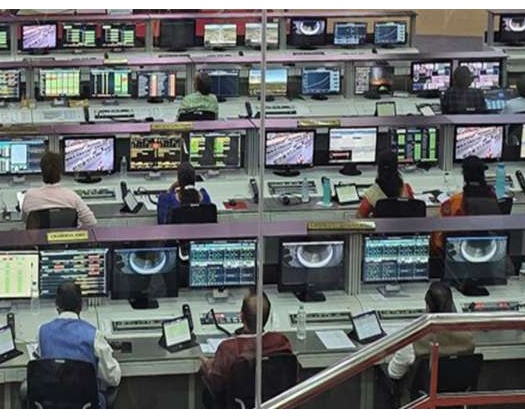New Delhi: The index has achieved a record high for the fourth consecutive week, experiencing a 2 percent increase on a week-on-week basis. This growth is primarily attributed to the real estate and financial sectors, which have seen gains ranging from 4 to 6 percent, according to a report issued by Goldman Sachs.
Conversely, the Information Technology (IT) and pharmaceutical industries have seen a decline, with a drop of 2 to 3 percent.
The report further notes that the index has risen by 17 percent year-to-date (YTD), with approximately 60 percent of stocks listed on the BSE200 reaching their 52-week highs.
However, this figure falls short of the peak levels observed in the past, where 75 to 90 percent of stocks achieved their yearly highs. Notably, 40 percent of stocks included in the MSCI India index have underperformed the market this year, indicating the presence of underperforming sectors even within a period of market recovery.
The valuation of the MSCI India index has reached its zenith, with a next twelve months (NTM) price-to-earnings (P/E) ratio of 24.6x, which is 2.4 standard deviations above the average over the last ten years. This valuation premium is significant, with the index now offering a premium to the MSCI Asia Pacific ex-Japan index of around 90 percent, a notable increase from the five-year average of 54 percent.
Despite this, the performance of mid and small-cap indices is at its peak, with large-cap stocks showing a slight decline in valuation compared to their historical peaks.
The sectors leading the market recovery include financials, energy, and domestic cyclicals such as materials, consumer discretionary, and industrials, which are trading at levels below their peak valuation.
Furthermore, over 20 percent of stocks in the MSCI India index are currently trading at next twelve months (NTM) price-to-earnings (P/E) ratios below the 70th percentile of their historical performance.
In particular, stocks in the energy, financials, telecommunications, consumer discretionary, and industrials sectors are experiencing a trading range of 15 to 60 percent below the valuation threshold, presenting opportunities for investors seeking value.
In the realm of investment inflows, Foreign Institutional Investors (FIIs) have invested USD 0.3 billion over the past week, contributing to a cumulative total of USD 9 billion for the year.
Meanwhile, Domestic Institutional Investors (DIIs) have demonstrated increased activity, acquiring USD 0.5 billion in shares during the same timeframe, with the year-to-date inflows reaching USD 39 billion.
During its thirteenth annual GS India Chief Investment Officer (CIO) tour, Goldman Sachs analysts engaged with numerous corporate leaders from various sectors, including industrials, financials, and healthcare.
The insights gleaned from these engagements further highlight the robustness of certain sectors amidst prevailing market challenges.
Goldman Sachs observed that a significant portion of MSCI India stocks, accounting for over 20%, are currently trading at a Net Tangible Value (NTM) Price-to-Earnings (P/E) ratio below the 70th percentile of their historical averages.
Specifically, sectors such as energy, financials, telecommunications, consumer discretionary, and industrials present attractive value opportunities, with 15-60% of their stocks exhibiting lower-than-average valuations.
Furthermore, the bank conducted a screening process on 20 "buy-rated" stocks that have underperformed the MSCI India Index in the current year but are presently trading at valuations that are considered reasonable in relation to their historical performance.
Following the decision by the Federal Open Market Committee (FOMC) to reduce the Federal Funds Rate, the NIFTY Index experienced a 2% increase. Historically, India's equity markets have shown strong performance in the three to six months following the initiation of the first rate cut during periods not characterized by recession.
However, Goldman Sachs noted that the magnitude of the increase was relatively subdued when compared to other markets sensitive to interest rate changes in the Asia-Pacific region.
Sectors that have traditionally demonstrated resilience following non-recessionary rate cuts include consumer discretionary, industrials, and information technology.









